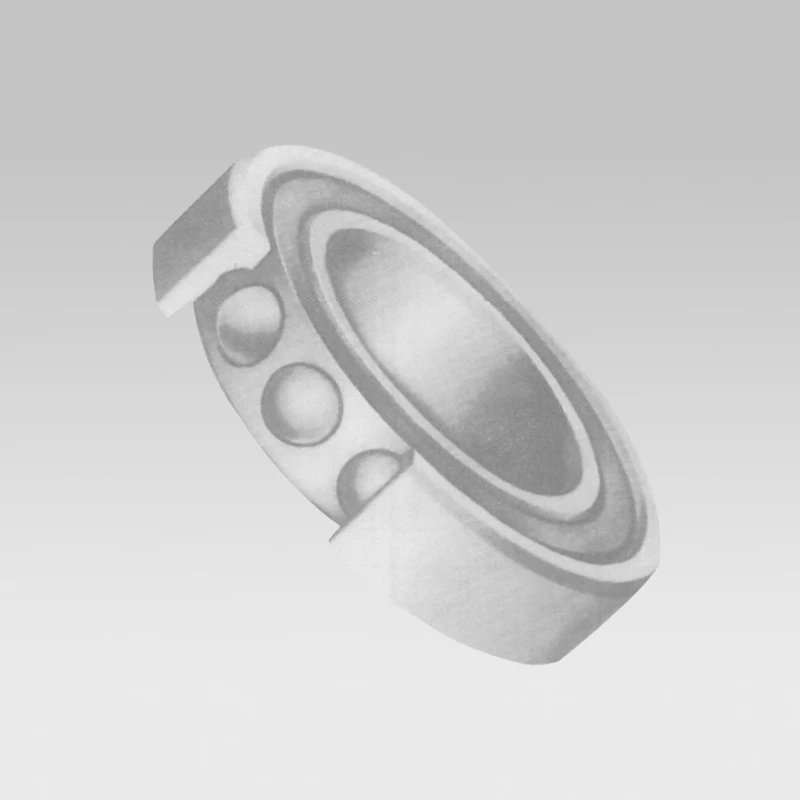
Dec . 24, 2024 01:24 Back to list
Understanding the Benefits and Applications of Double Angular Contact Ball Bearings
Understanding Double Angular Contact Ball Bearings
Double angular contact ball bearings are specialized bearings designed to accommodate axial loads in both directions, making them ideal for high-speed and high-precision applications. These bearings feature two rows of balls, each positioned at an angle relative to the axis of rotation, which allows them to handle combined loads effectively. In this article, we will explore the construction, types, applications, advantages, and considerations regarding double angular contact ball bearings.
Construction
A double angular contact ball bearing consists of an inner ring, an outer ring, a cage, and two rows of balls. The inner and outer rings are designed to have raceways that are precisely shaped to allow angular contact with the balls. The angle of contact is crucial as it affects the bearing's load-carrying capacity and its ability to handle moments of force. The design typically consists of a contact angle of 15, 25, or 30 degrees depending on the application requirements.
This bearing type is typically made from high-quality steel, which provides durability and resistance against wear. Advanced manufacturing processes also enable improvements in dimensional accuracy, surface finish, and overall performance.
Types
Double angular contact ball bearings come in various configurations to cater to different operating conditions and applications
1. Standard Design This is the most common configuration, suitable for numerous applications where axial and radial loads are present. 2. Modified Designs These bearings can be tailored for specific applications, such as adjusting the contact angles or optimizing ball size and raceway profile. 3. Sealed or Shielded Versions These variations provide additional protection against contaminants, making them suitable for harsh operating environments.
Applications
double angular contact ball bearing

Double angular contact ball bearings are widely used in various industries due to their ability to handle high loads and dynamic movements
. Common applications include- Machine Tools These bearings are essential in lathes, milling machines, and grinding machines due to their precision and load capacity. - Robotics In robotic joints and actuators, these bearings enable smooth and precise motion while supporting axial and radial loads. - Aerospace The lightweight yet strong design makes them suitable for aircraft components, where reliability and performance are paramount. - Automotive Commonly found in high-performance engines and transmissions, they help improve efficiency and reduce wear.
Advantages
1. High Load Capacity Double angular contact ball bearings can handle significant axial and radial loads, making them reliable for heavy-duty applications. 2. Precision They provide excellent accuracy, minimizing unwanted movement and enhancing performance in high-speed operations. 3. Versatility These bearings can be adapted for various applications by changing the design specifications, such as the contact angle or materials used. 4. Lifespan With proper maintenance and lubrication, double angular contact ball bearings can have a long operational life, reducing the frequency of replacements.
Considerations
While double angular contact ball bearings are advantageous, certain factors should be considered when selecting and using them
- Installation Proper installation is essential to avoid premature wear or failure. It is crucial to maintain alignment and preload. - Lubrication Adequate lubrication is necessary to prevent friction and overheating. The choice between grease and oil will depend on the application requirements. - Load Conditions The operating loads (axial and radial) must be known to select the appropriate bearing type and design to ensure optimal performance. - Temperature Operating conditions, including temperature, can affect bearing performance. Selecting materials that can withstand thermal variations will extend bearing life.
Conclusion
Double angular contact ball bearings are critical components in many engineering applications where precision, reliability, and performance are essential. Their unique design allows them to support axial and radial loads effectively, making them suitable for a variety of industries. By understanding their construction, types, applications, and maintenance considerations, engineers and designers can leverage double angular contact ball bearings to enhance the efficiency and lifespan of machinery. Investing in quality bearings and observing best practices will ultimately lead to improved operational performance and reduced downtime.
Latest news
-
Premium Deep Groove Ball Bearings | High Speed & Reliability
NewsAug.29,2025
-
Durable Scaffolding Clamps - Secure & Reliable Tube Connectors
NewsAug.28,2025
-
Common Failures in Thrust Ball Bearings and Solutions
NewsAug.22,2025
-
How Tapered Roller Bearings Can Take Shock Loads
NewsAug.22,2025
-
Angular Bearings in High-Precision Spindles
NewsAug.22,2025
-
The Impact of Misalignment on Cylindrical Roller Bearing Performance
NewsAug.22,2025
